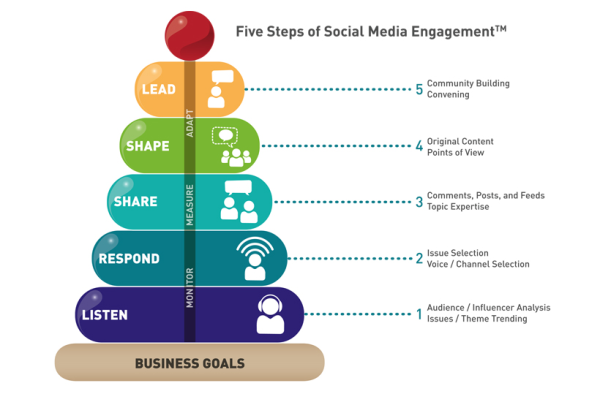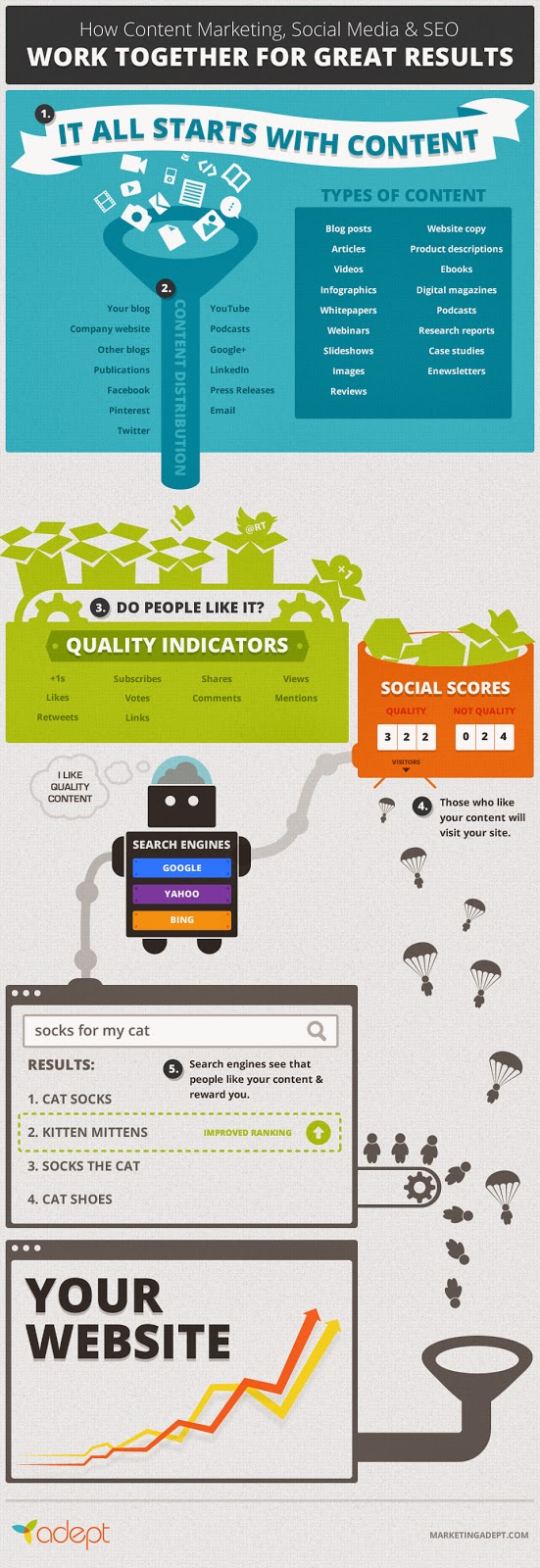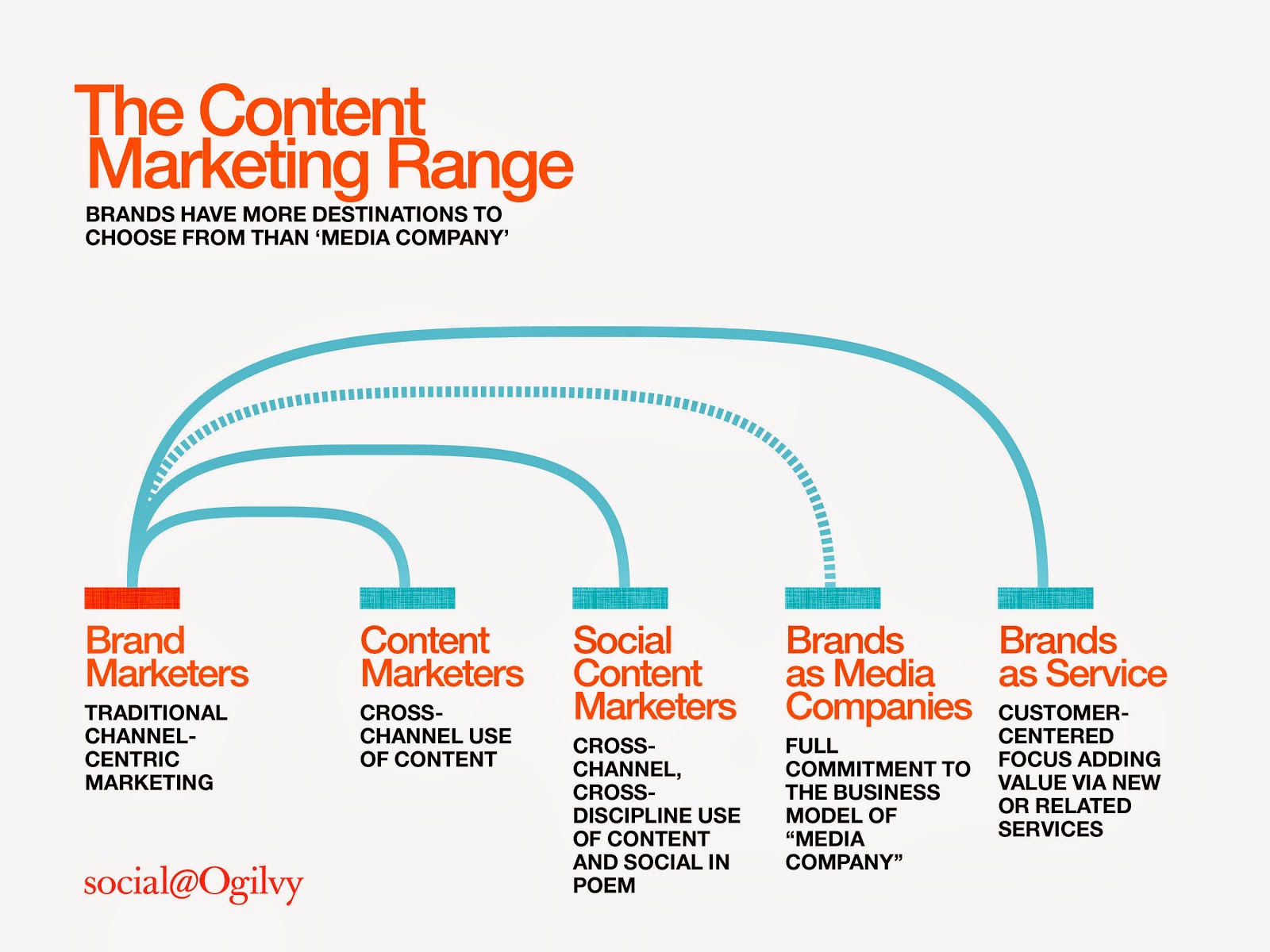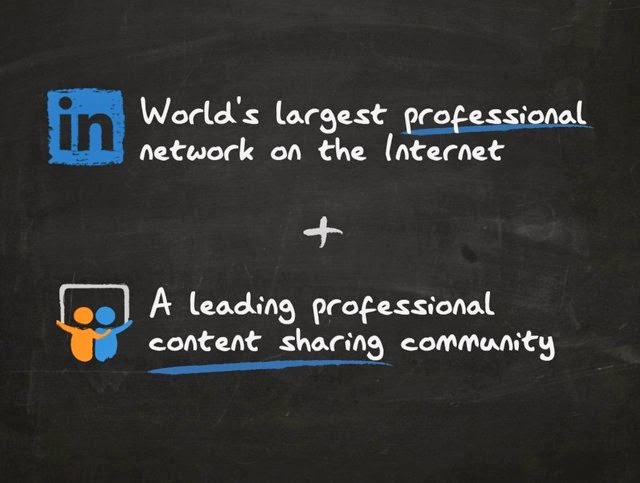
Top 15 Digital Marketing Trends 2014 in India
January 11, 2014
Top 10 Tips to Fire-up B2B Digital Marketing
January 11, 2014In the year 2013, we witnessed hell lot of changes, the emergence of new trends, and innovations in the social media marketing industry that may continue in 2014.

Social Media Marketing Trends
In 2013, Google+ emerged dominant in SEO and social media strategies, while Facebook and Twitter improved their advertisement targeting and performance, and Twitter acquired Vines, and Facebook pushed Instagram further. Snapchat became more popular that many brands started using it, Pinterest shed its women-oriented image, and LinkedIn introduced influencers’ publishing.
Now, what is ‘in’ for Social Media Marketing in 2014?
I’ve created a list of top 15 social media marketing trends in India 2014, to summarize all these happenings and what to expect in 2014.
#1. Social Media Marketing to be an integral part of Digital Strategy
With the introduction of the Hummingbird update last year 2013, marketers soon realized that social and engagement signals would become strategic in SEO strategy.
Meanwhile, almost all businesses investing in Digital Marketing unequivocally gave significance to social networks to market and tried their best to conjunct SEO with SMM strategy.
Social media is important to any digital strategy
In 2014, marketers will take social media more seriously with focus on quality content, engagement and conversations, making it excessively important like never before.
According to HubSpot, 83 percent of marketers say social media marketing is important for the business and 56 percent of them are using social networks for +6 hours a week.
In India, ask any SEO, they will tell you to use Social Media Marketing, because social signal such as likes, follows, fans, shares etc. are strategic for higher ranks. However, SEOs in India often downplays its use, and do not properly use it to engage the audience and increase ROI.
In 2014, I believe with the realization of the significance of social media for business, marketers in India will use social networks actively and develop more intricate social media marketing strategies.
#2. Spotlight on Engagement and Building Community
In a survey, more than 95 percent of social media savvy organizations in India agreed that now their social media marketing objective is to engage, build community and turn their audience brand advocates.
While only 43 percent agreed that, their objective is lead generation. This directly means, now focus on engagement and building community is highly important, and monetization and ROI isn’t a big issue.

Social Media Engagement Diagram
In 2014, almost all businesses will realize the power and importance of engagement and community building. However, I believe, owners, entrepreneurs, investors, and managers will definitely stress for returns on the investments.
Nevertheless, marketers would agree if you build brand advocates out of your followers on social media, you get the virality, and ROI maximizes itself without much ado.
#3. Focus on Content Strategy, Content Development and Content Marketing for Social Media
In 2013, content-driven social media marketing emerged, which dominated strategies in India. Now, in 2014, again, this stress over content strategy and marketing will continue and it will be more far-reaching, complex and deeper.
In 2013, the dominant topics and concept revolved around politics, current issues, Alok Nath, Arvind Kejriwal, memes, music, celebrities, movies etc. Moreover, content type was varied ranging from text, image, audio, and video.

Courtesy – Marketing Adept
In 2014, we will see many more emerging topics emerging especially from politics, entertainment, and news industry, and the content type is going to be highly varied from interactive, infographics to gifs, micro-video, mobile-content etc.
Now, wherever the marketers are marketing for their businesses/brands they are focusing on content strategy across different platforms. Most importantly, now they are developing content strategy separately for each platform – Facebook, Twitter, Pinterest, LinkedIn, YouTube etc.

Social Content Marketing – Job Profiles
To approve of the importance of content, in a report from SocialBeat, picture and video contests were the most popular form of contests in India.
In India, image and video content generated much engagement and helped businesses to go viral extensively. This video by Coca Cola went viral on YouTube, Facebook, and Twitter, generating millions of views across all devices.
#4. Blogging For Social Media Marketing
In India, blogging was very limited to bloggers but in 2013, we witnessed many businesses/brands used blogging to engage their audience. Most importantly, marketers made the blogging of their content publishing platform.
The blog is the content publishing platform, where brands/business can redirect the audience from social media
Today in content and SEO strategy, blogging is playing a strategic role by helping to engage the audience and increase rank on Google. Now, Google’s algorithm takes into the account of social signals such as likes, shares, tweets etc. while listing the blog on Google search.
In addition, marketers are using a blog to redirect the audience from social networks to their blog on their website. On the blog, marketers are trying to generate leads out of the traffic by using opt-ins, subscriptions, engagement, sharing and other conversion tactics.
In India, businesses/brands are understanding the importance of blogging, therefore, we’ve many large players such as Myntra, Snapdeal, Infosys, MakeMyTrip etc. blogging to build brand loyalist.
Myntra has a video blog to engage their audience on topics related to fashion and style.
Myntra’s Video Blog
Snapdeal blogs on a variety of topics majorly on fashion, technology, and gifting etc.
Snapdeal’s Blog
#5. Meaningful Engagement Vs. Return on Investment
In 2013, marketers changed their focal point from a technical aspect to the artistic part of social media marketing. Now, social media marketing is not just a secondary contrivance in hands of marketers instead a primary one, where they’re focusing on meaningful engagement.

Managing Engagement on Social Media
In 2014, this engagement will flourish further, where marketers will try to give unmatched customer experience and enhance customer delight. Today, they understand that if brands/businesses provide ‘value’ then they easily turn fans/followers into brand advocates.
Return on investment will still be a concern this year again, and against meaningful engagement, ROI will take a backseat.
#6. LinkedIn and Slideshare – Top B2B Marketing Channels
I love both LinkedIn and Slideshare, as I’ve seen with little efforts I’m able to get much out of it. Unlike Facebook and Twitter where you’ve to put in a hell of efforts to get the desired response, and still, you’re nowhere.
LinkedIn with Slideshare, marketers have started to use to reach top searches without any efforts. As a marketer, you might have noticed that increasingly in B2B marketing many marketers have started heavily using LinkedIn and Slideshare to reach their audience both on the respective platforms and on search engines.

LinkedIn + Slideshare
Most importantly, it is Slideshare after LinkedIn, which is emerging now a top contender in B2B marketing social channels. A post by Chad Pollitt on Social Media Today further strengthened this, by putting out the data of his website, which shows Slideshare is undisputed B2B marketing platform with a 25% conversion rate.
In India, LinkedIn has picked up in a big way not just flux from professionals have had taken but also many Indian B2B companies have joined. Today, LinkedIn has 20 million users only from India, which is 9 percent of its total membership.
While we all know about Slideshare’s Indian connection (if you don’t remember – Slideshare was founded Indian sister-brother duo – Rashmi Sinha and Amit Ranjan) as Indians sold it to LinkedIn in 2012 for US$ 119 million.
In India, you will easily find many B2B businesses using LinkedIn and Slideshare to market and in 2014, it will increase exponentially.
#7. Image-Centric Social Networks to Emerge in India
In 2009, when Pinterest launched, we witnessed a move to image-centric networks where ‘selfies’, ‘photo-ops’, ‘win’, ‘fail’ etc. were discovered. Now, we’ve major image-centric networks – Pinterest, Tumblr, Instagram, Facebook, and now Google and Twitter, who’re redefining photo posting experience and engagement.
Today, these image-centric networks are mainstream, and they’ve a long haul in front of them. This movement from text to photo/image in social media has been boon for B2C marketing for the e-commerce industry.
Pinterest E-commerce
According to HubSpot, Pinterest pins drive 25 percent more sales a year ago. In India, Pinterest and Tumblr are the fastest growing social networks in India at 589% and 130% per year, according to ComScore India digital report 2013. Moreover, gauging this popularity, e-commerce websites and small to large businesses in India are entering these networks to market.
So, if you’ve haven’t jumped on the bandwagon then do it now. As a marketer, I’m keeping a close watch on both Pinterest and Tumblr, their outreach and popularity in India.
#8. Micro-Video, GIFs and Video Blogging
In the digital marketing industry, we have witnessed from text, blogging, article submission to image, infographics, video blogging, micro-video, and others. The most interesting of all are micro-videos, GIFs and video blogging that I still find amusing and amazing at the same time.
Notably, 70 percent of Indian Internet users watch the video, and with smartphone owners reaching to 104 million in India, the video will get the much-needed boost.
Furthermore, according to a report from Vine and Mashable, marketers across the world especially in the US, where 87 percent of marketers are using video to promote their business. Interestingly by 2017, 66 percent of global mobile data will be consumed for video watching.
In India, we with an increase in smartphones and engagement on Internet, video especially micro-videos, GIFs and video blogging will play a strategic role in reducing bounce rate and enhancing engagement.

 Lately, with Instagram GIFs has become popular and Vine is at the forefront in micro-video and YouTube for video blogging.
Lately, with Instagram GIFs has become popular and Vine is at the forefront in micro-video and YouTube for video blogging.
According to fresh data, YouTube, Instagram, and Vine have made to the top 10 social media platforms, making video marketing important for the digital strategy.
With many marketers are launching video campaigns, I’m optimistic that micro-video, GIFs and video blogging will become a crucial part of social media marketing strategy in India.
#9. Viral Video Marketing in India
In India, viral video marketing in the digital marketing industry is going viral. Yes, I mean it!
Today businesses understand the importance of viral video marketing and they’re even ready to spend good enough only if offered a proven proposition.
In 2014 India, viral videos will help social media marketers to enable their brands/businesses to go viral, build brand engagement and identity, and create brand advocates out of followers.
If you haven’t noticed, in a recent video from ‘All India Bakchod’ – Kejriwal Song – they mentioned ‘Snapdeal’ – did you just noticed, with such a funny song ‘All India Bakchod’ went viral and also helped ‘Snapdeal’ to share the virality.
In 2014, brands will definitely embrace this strategy and will look for innovative video production in comedy, infotainment, edutainment, entertainment etc. to capture the audience’s attention and go viral.
However, viral video marketing in India is at nascent stage therefore still unproven for its effectiveness and ROI in India. Nevertheless, any brand/business esp. B2C businesses who would want to reach millions of people in short span without spending moolah will definitely opt for viral video marketing in India.
Don’t worry, in India people a huge appetite for video – according to ComScore, in India video consumption has doubled in two years to 3.7 billion videos per month. I hope you’re convinced!
#10. Social Customer Relationship Management in India
In 2013, social CRM in India was extensively used not just by big brands but also by small brands, businesses, organizations, governmental bodies etc. The prominent social platform for social CRM was Facebook, where you can find brands directly interacting with their customers/fans on their page itself solving their queries and issues.
Notably, big brands that have a huge fan following are not actively monitoring their page for social CRM, which often leads to disorientation. You easily find disgruntled customers outpouring their annoyance on their social media profiles.
Social Media Customer Relationship Management
In 2014, I believe this will stop, as marketers are aware of the virality, and if a single bad-mouth from disgruntled customer went viral that would unleash havoc for the brand/business.
Social CRM in India will have an important role to play to prevent this, and simultaneously help in brand building, and enhancing brand loyalty this year 2014.
#11. Mobile Driven Social Media Marketing Strategies
Second screen experience quite important in India, which is why marketers are focusing on it.
In 2013, marketers undermined mobile’s capability due to ROI but second screen experience has become essential in online customer decision-making journey. Therefore, in 2014, marketers will develop mobile-driven social media marketing strategies and campaigns to engage and convert.
With 104 million smartphone users reaching in 2014 in India and at present 110 million users in India are mobile based. Interestingly, out of 110 million users, 25 million users are rural and these 25 million rural users constitute 70 percent of total rural Internet users in India.
Even e-commerce businesses in India are serious about second screen experience. Flipkart is aggressively pushing his mobile app (for mobile commerce) to sell on mobile.
In 2014, if you’re ignoring or forgot to add second screen experience in your social media strategies then you will miss out a huge market in India. There can be a lot done on mobile, as the integration of mobile app with social media, and generation of mobile-friendly content, and using mobile social media app – Vine, Snapchat, Instagram etc. to market and cross-sell.
#12. E-commerce India Will Invest More, Engage More & Convert More on Social Media
It’s noteworthy that, India’s e-commerce is booming where big players and small and regional players also competing aggressively. If you’re an Indian and using Facebook, you just might have liked one of the e-commerce biggie or your favorite f-shop/f-commerce.
In 2014, this upward trend in e-commerce India growth story will continue. Moreover, these e-commerce websites in India will invest more, engage more and convert more on social media platforms. In a case study, it was reported that Myntra had more than 25 percent revenue directly from the Facebook network.
Myntra’s Tabs on Facebook
In India, Facebook, YouTube, Pinterest, and Twitter are being actively used by e-commerce websites in India.
Why e-commerce India will be investing more in 2014?
In India, there are many regional players especially on Facebook, who’re using F-commerce applications to sell products directly on Facebook. Moreover, with the increase in competition, flexibility in running contest campaign, increase in activity and user base, improvements in social advertising, and higher conversion rates, e-commerce in India will increase their social media marketing budget in 2014.
Why e-commerce India will be engaging more in 2014?
In 2013, no e-commerce business in India was behind to use contests, content, apps and other tools to engage the audience on social media platforms. In 2014, this trend continues but with more focus on engagement than the return on investment and enhanced use of video, content and inbound marketing tactics, image, and contests.
Why e-commerce India will be converting more in 2014?
In 2014, e-commerce businesses have realized that to enhance conversion they need engagement. And businesses that will be pushing for engagement instead of advertisements and selling, will convert more.
#13. Social Media Advertising
In 2013, Facebook introduced hashtags, which helped in targeting and reaching a relevant audience. Moreover, many relevant changes in social advertising were made to make targeting accurate and effective.
In 2014, improvement in social media advertising will continue, and possibly major social media networks esp. Facebook and Twitter will experiment and improve their advertising.

Social Media Advertising
In addition, as content going invisible from fans’ news feed, it forces brands/businesses to use sponsored links, sponsored hashtags, and others to reach their audience and engage.
In India, many companies and e-commerce businesses will heavily rely upon increasing their engagement and reaching their target customers, and social media advertising will be a crucial component in social media strategy.
#14. Social Media Analytics and Strategy
After the search analytics revolution with Google, we will witness a similar kind of social media analytics revolution with Facebook. The incredible amount of analytics from social media networks will help fuel a robust social media marketing strategy.

Courtesy – Advanced Human Technologies – Social Media Strategy Framework
At present, most social media marketing strategies are based on raw data, assumptions, and unproven theories. But in 2014, it will change, and marketers in India will realize the power of Social Media Analytics to empower/tweak their strategies in order to enhance effectiveness.
Indian marketers will extensively use social media analytics tools like HootSuite, Social Bakers, MOZ Analytics, SproutSocial, LocalResponse, and others in 2014. Moreover, we may witness innovative social media marketing campaigns made for a local audience in India this 2014.
#15. Integration of Social Media with Marketing Strategy
I believe, in 2014, integrated marketing will be a big thing. In 2014, social media marketing will become an inevitable component of any online marketing strategy in India.
In 2013, many brands/businesses integrated social media marketing up to their offline marketing strategy. We had seen extensive use of hashtags, social media icons and other signals being used on billboards, television commercials, radio etc.
This year, we’d see many social media marketers leveraging the power to social media with the help of offline channels to spark discussions, conversations, and engagement on social media platforms.
The most recent integrated marketing campaign is by GoDaddy, which has Mithun Chakraborty (veteran Indian actor) advertising for GoDaddy for both online and offline channels.
I know, I’ve missed many other emerging trends in 2014, then why not you add it. Use the comment box below, to add more trends or discuss the social media marketing juncture in India. Are you excited about? Do let me know.
- Top 8 Digital Marketing Trends in Real Estate Industry of India - July 13, 2023
- Top 11 Tips to Remember While Buying a Domain in 2023 - July 9, 2023
- 10 Steps to Create Professional WordPress Website in 2023 - July 3, 2023




